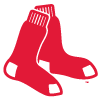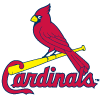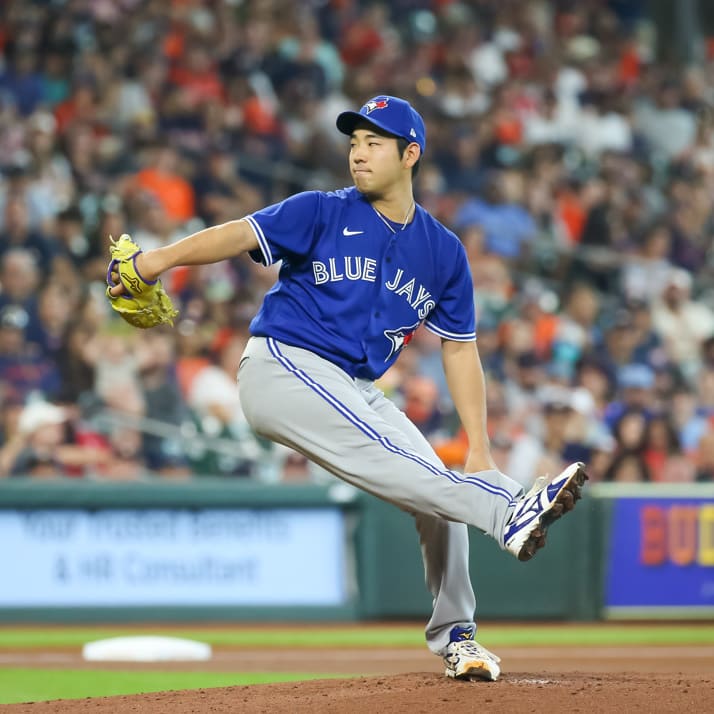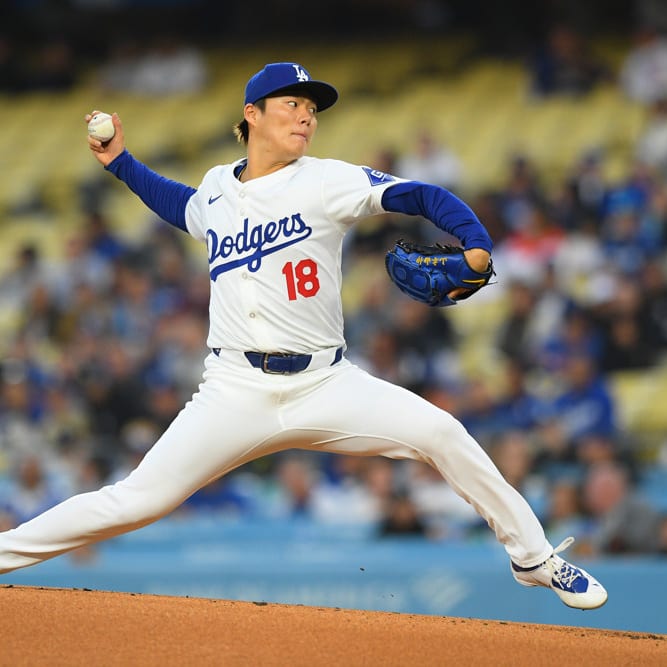This article is part of our The Z Files series.
Nolan Arenado (3B)
Most are attributing Arenado's outstanding 2015 campaign to health and finally putting it all together, as his minor league history portended a breakout. Both certainly played a major role but there are also a couple of factors that buoyed his success and are no sure thing to repeat.
The defining element of Arenado's 2015 season was a huge jump in power, knocking 42 out of the yard. The impetus was a big spike in home run per fly ball (HR/FB) rate, which rose to to 19 percent. While it's true this mark has climbed each season of Arenado's three-year career, from 2014 to 2015 it went hand-in-hand with a bump in hard hit percentage. Arenado's 2015 hard hit percentage went up only slightly from 2014, suggesting there was some good fortune involved with the big leap in HR/FB. As such, the safe play is to plan on a drop back into the mid-30s. Let's split the difference between Arenado's 19 percent mark and 11 percent from 2014. Assuming a similar number of fly balls, that yields 34 homers, which is
Nolan Arenado (3B)
Most are attributing Arenado's outstanding 2015 campaign to health and finally putting it all together, as his minor league history portended a breakout. Both certainly played a major role but there are also a couple of factors that buoyed his success and are no sure thing to repeat.
The defining element of Arenado's 2015 season was a huge jump in power, knocking 42 out of the yard. The impetus was a big spike in home run per fly ball (HR/FB) rate, which rose to to 19 percent. While it's true this mark has climbed each season of Arenado's three-year career, from 2014 to 2015 it went hand-in-hand with a bump in hard hit percentage. Arenado's 2015 hard hit percentage went up only slightly from 2014, suggesting there was some good fortune involved with the big leap in HR/FB. As such, the safe play is to plan on a drop back into the mid-30s. Let's split the difference between Arenado's 19 percent mark and 11 percent from 2014. Assuming a similar number of fly balls, that yields 34 homers, which is a safer expectation than a repeat of last season.
Arenado led the majors with 130 RBI last year. Obviously, if Arenado's power falls, his RBI total will be affected as well. But there's another problem: in 2015, Arenado slashed .373/.423/.733 with runners in scoring position. Simply put, this wasn't clutch, it was lucky timing. The league average is hitting .005 to .010 points better with runners in scoring position than your overall average. Arenado was .087 points higher. Some of Arenado's RBI came as a result of a larger-than-normal cluster of his knocks coming with ducks on the pond. So not only should Arenado lose RBI from a power drop, he's likely to sport a lower average with runners in scoring position, further deflating his 2016 total.
Keep in mind this all assumes no skills growth from the still-maturing third baseman. Arenado could cut down on his strikeouts or add some more hard hit balls. Just temper expectations as a significant portion of Arenado's production last season was blessed by Lady Luck.
Dee Gordon (2B)
The first reaction when seeing a .383 batting average on balls in play (BABIP) is that there's no way that's sustainable. And chances are Gordon's will fall, but to where? Intuitively, Gordon should be able to carry a high BABIP due to his speed and ability to beat out infield grounders, including bunting for hits. So let's look at Gordon's detailed hit distribution and compare it to 2014 when he sported a .346 BABIP, courtesy of Fangraphs:
| Season | BABIP | LD% | GB% | FB% | IFFB% | IFH% | BUH% | Soft% | Med% | Hard% |
| 2014 | .346 | 21.3 | 59.7 | 19.1 | 8.0 | 11.3 | 42.6 | 22.8 | 59.8 | 17.3 |
| 2015 | .383 | 21.5 | 59.8 | 18.7 | 3.2 | 12.1 | 42.1 | 20.6 | 61.9 | 17.6 |
That's just scary close. On the surface, there's nothing that can result in a difference of .037 points in BABIP. Now let's look at the BABIP of the different types of batted balls:
| Season | GB | FB | LD | BUNT |
| 2014 | .316 | .140 | .561 | .455 |
| 2015 | .316 | .124 | .748 | .500 |
That's better. There are differences with fly balls and bunts, but not enough to account for the large discrepancy. However, the difference in line drive BABIP is quite telling.
As expected, the league-wide BABIP on liners is the greatest of all the batted balls. In 2015 it was 0.678 as compared to 0.683 the year prior. Due to their nature, the BABIP on liners is independent of the batter's speed or power and in general, they're well hit or they would have a line drive trajectory. It's also relevant to note line drive BABIP is generally park independent since Gordon was a Dodger in 2014 and Marlin last season.
Putting this together, while Gordon should be expected to carry a higher than average BABIP on grounders, it should be league average on line drives. In 2014, Gordon was often victimized when he hit the ball on a line while last season he enjoyed some good fortune. The sage play is to expect Gordon's line drive BABIP to revert to league norm this season, which yields an overall BABIP between 0.365 and 0.370. Chances are most projection systems regress it more than that. A lot more. Gordon's BABIP not only drives his batting average but since his primary fantasy utility comes from steals, a higher BABIP should render more stolen base opportunities.
Of course, contact is also integral to batting average and last season, Gordon cut his strikeouts down from 17 percent to 14 percent. It may not seem like much, but remember, base-stealers live off opportunities to run.
Despite the compelling evidence that Gordon's BABIP shouldn't fall that much, counting on a mark near 0.370 doesn't feel right. However, no one else is either, which bakes in some upside. It takes a commitment to constructing a team around Gordon, which can be tricky in a draft. However, auction dynamics lend themselves to pulling it off, which makes for a very intriguing game plan.
Xander Bogaerts (SS)
Like Gordon, Bogaerts recorded an eye-popping BABIP in 2015, checking in at 0.372, a huge jump from 2014's 0.296. Let's look at Bogaert's hit distribution in an effort to discover the culprit.
| Season | BABIP | LD% | GB% | FB% | IFFB% | IFH% | BUH% | Soft% | Med% | Hard% |
| 2014 | .296 | 20.6 | 38.1 | 41.3 | 10.7 | 10.3 | 50.0 | 18.8 | 46.9 | 34.2 |
| 2015 | .372 | 21.5 | 52.7 | 25.8 | 10.6 | 11.1 | 16.7 | 21.0 | 51.7 | 27.2 |
Unlike Gordon, Bogaerts' profile is quite different. While they're included for completion purposes, Bogaerts attempted so few bunts that those results should be ignored. The two most telling changes are a huge jump in ground-ball rate and a precipitous drop on hard hit percentage. More worm burners should help BABIP, while fewer well struck balls should hurt it. This is confusing. Maybe the BABIP on the different types of batted balls will better elucidate the answer.
| Season | GB | FB | LD | BUNT |
| 2014 | .258 | .134 | .675 | .000 |
| 2015 | .322 | .160 | .736 | .333 |
Well, the good news is we know what happened. The bad news is this doesn't bode very well for the young shortstop this season. The league average BABIP on grounders was .236 last season, so Bogaerts was extremely lucky with respect to BABIP on both ground balls and line drives. Remember, this good fortune resulted despite a marked decrease in well struck batted balls. If Bogaerts made a lot of hard contact, the BABIP would make more sense. But now, it's even more baffling.
Bogaert's 2014 is much closer to what should happen, based on league averages. The problem is that unless he makes more hard contact, his numbers will fall below league average. Adding to the concern is Bogaerts made much better contact last season and those gains are not a sure thing to stick.
The bottom line is the data puts Bogaerts closer to the .240 he hit in 2014 than the .320 he swatted last year. The caveat is that he's still very young, having turned 23 the final week of last season. All this is based on the promising shortstop repeating a poor hard contact rate. A return to 2014's level with the added grounders and fewer strikeout translated to an average well above .240 but still no where near the luck-drive .320 he enjoyed last year.
We haven't even broached the subject of power. Many believe Bogaerts is on the verge of a home run spike. In order to make it happen, he's going to need to loft more batted balls as well as centering more. That's a lot to expect, especially at his current market price.
Randall Grichuk (OF)
So far our examples are all in the top-60 according to average draft position. Let's take a gander at an outfielder who enjoyed an impressive campaign. Last year, Grichuk hit an impressive 17 homers in only 350 plate appearances, along with a .270 batting average and a handful (less a thumb) of steals. Many are expecting him to match, if not build on that this season.
Lost in the shuffle is a rather ugly 31-percent strikeout rate in concert with a meager six-percent walk rate. On the surface, unless Grichuk drastically improves his plate skills, even approaching a repeat of last season is a tall task.
As you no doubt surmise, Grichuk sported an elevated BABIP last season, checking in with a .365 mark. His HR/FB was also high at 19 percent. Let's go to the well one more time to see if Grichuk's batted balls support such a lofty BABIP and HR/FB. We'll only look at last season since he only had 116 at-bats in 2014:
| Season | BABIP | LD% | GB% | FB% | IFFB% | IFH% | BUH% | Soft% | Med% | Hard% |
| 2015 | .365 | 20.6 | 37.9 | 41.6 | 10.1 | 12.3 | 0.0 | 15.9 | 47.2 | 36.9 |
Contact may be an issue, but when Grichuk does strike the baseball, his hard contact rate is well above the 29-percent league average. Let's see how this reflected in BABIP of batted balls:
| Season | GB | FB | LD | BUNT |
| 2015 | .272 | .181 | .841 | N/A |
When discussing Dee Gordon's line drive BABIP, it was implied that most liners are well hit, so using the same logic, while some of Grichuk's BABIP on liners may be due to nailing a few harder, he was likely just plain lucky. However, the hard hit data does explain how Grichuk carried a BABIP on fly balls well above the league average of .129. Embellishing this is the fact that Grichuk lofts a healthy number of batted balls.
The data is still limited but early indications show that velocity off the bat is a repeatable skill and Grichuk scores very well in that department, suggesting he'll be able to maintain an elevated hard hit rate. That said, his BABIP on liners should regress toward the league norm. That won't impact his power but it will lower his batting average, costing him .015 to .020 points, lowering the baseline to about .250. That isn't a show-stopper but it's not what you want from someone expected to build on last season's numbers.
The wild card is Grichuk's contact rate and, to a lesser extent, plate discipline. If he's able to cut down on the whiffs – and his minor league history suggests he can – then that will mitigate the impending batting average correction from a falling BABIP on line drives. The upside comes from his hard contact rate. Every punch out Grichuk shaves off his ledger affords the chance to hit the ball hard. And when he squares one up, good things usually happen.










